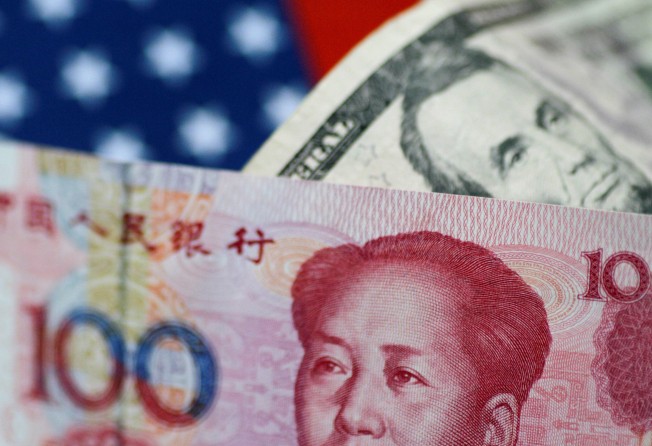Currency strategist expects China’s central bank to intervene as yuan weakens for seventh day
Yuan has wiped off all gains against the US dollar this year, but the currency may bounce back after US dollar loses momentum from its recent rally

The yuan extended its losses for a seventh straight session on Friday after the People’s Bank of China set the midpoint lower for a third consecutive day, but analysts expect the central bank to soon take action to stabilise the currency hit by the simmering US-China trade dispute.
The PBOC set the midpoint lower by 98 basis points, or 0.15 per cent, at 6.4804 per US dollar. The midpoint has been reduced by a combined 0.85 per cent since Wednesday, with the level now at a new five-month low.
As China does not allow the yuan to trade freely, the central bank announces a midpoint every morning for the yuan against the US dollar and other currencies, allowing it to move up or down two per cent from the midpoint during the day.
Offshore yuan dropped to 6.5155 against the US dollar in early Friday afternoon trading, down 0.32 per cent from Thursday’s close at 6.4949, taking the overall losses to 2 per cent since last Wednesday. The weak yuan was due to the traders worry about the trade war between China and US.
“During this period of escalating protectionism and rising investment tension between China and the US, the market usually reacts to bad news by causing the US dollar to appreciate against other major currencies. This will also tend to weaken the yuan against the dollar,” said Iris Pang, economist for Greater China at ING.
Pang said if the yuan keeps weakening, this could lead to capital outflows that would force the government to introduce measures to prevent this from escalating.
“We believe more market opening up measures to attract inflows will be unveiled in the near future. This is important to offset outflows induced by an expected weaker yuan,” said Pang.
In late afternoon trading on Thursday, the yuan fell as low as 6.5166, almost touching the year’s low of 6.5340 reached on January 9. The currency is down 4 per cent from its peak in March and has wiped out all gains this year.
The softening of the US dollar against other major currencies will help the yuan bounce back, said Jasper Lo, chief investment strategist at Eddid Securities and Futures.
“The euro bounced back 0.87 per cent against the US dollar and the pound was up 1.17 per cent. They strengthened after the Bank of England’s chief economist called for the UK to increase interest rates, while the European Central Bank also said it may also take action to stabilise the euro,” Lo said.
“Some traders believe the PBOC would like to let the yuan to weaken further to boost exports amid the trade war. However, I believe this is speculation as the PBOC would like to stabilise the yuan to prevent capital outflow. The market is now looking at whether the PBOC will make any announcement at the weekend to stabilise the yuan.”